INESC TEC in another mining project
Project unexmin will develop autonomous robots to explore flooded mines in Europe
Portugal will be participating in a European project where the goal is to explore, using robots, mines that have been closed and are partially underwater. The project will provide five million euros to build the first robots in the world capable of operating underground, autonomously and remotely. The submersible system will be tested in Portugal, Finland, Slovenia and the United Kingdom.
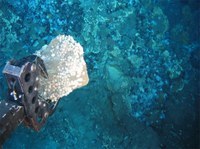
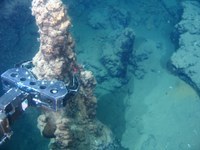
INESC TEC will develop three robot prototypes
INESC TEC will develop three robotic prototypes that will be tested for a year, between March 2018 and April 2019, in four mines: Urgeiriça (Viseu, Portugal), Kaatiala (Finland), Idrija (Slovenia), and Deep Ecton (United Kingdom), which is almost fully submerged and has been inaccessible for over 150 years.
The goal with the Underwater Explorer (UX-1) is to autonomously provide a 3D map of the mine in order to gather valuable geological information that cannot be obtained in any other way: in general the mines will be too deep and dangerous for access by human divers.
A multi-robot system based on UX-1 will represent new technology, made possible by recent developments in autonomy research, leading to a completely new class of robots, capable of operating underground and remotely.
“Developing this new class of robots will bring new research challenges related to the miniaturisation and adaptation of deep sea robotic technology to this new application environment, and to the interpretation of high volumes of multivariate geoscientific data”, explains José Miguel Almeida, researcher at INESC TEC’s Centre for Robotics and Autonomous Systems (CRAS).

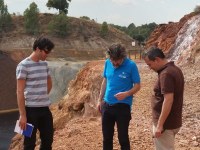
What will the UX-1 robotic explorer do?
The explorer makes it possible to obtain valuable information of the state of the mines, some of them hundreds of metres below water, with fewer risks to human divers.
The robots will have a round shape so that they don’t get stuck in structures such as nets and wires, and their average size will be between 60 and 80 centimetres. This way, it will be possible to explore confined spaces, and travel between eight to ten kilometers autonomously, and dive to great depths up to 500 metres.
The robots will operate autonomously, mapping the inside of the caves, avoiding obstacles, and making decisions, such as going back when the robot cannot finish the trajectory due to lack of power.
Outside the researchers have access to basic information, such as the notion of depth, the extension of the path in each dive, and if the robots have detected any obstacle.
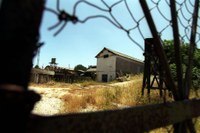
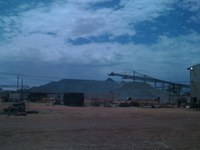
Tests in mines
The first robot will be validated in 2018, at the Kaatiala quartz mine, in Finland. According to the researchers, this is the simplest scenario with the lowest dive depth, and so the system can be recovered more easily.
Next is the Urgeiriça, in Viseu, Portugal, in June 2018, and then in October of the same year, the mercury mine of Idrija, in Slovenia. There are two large mines with dozens of kilometres of flooded tunnels. This is where the second robot will be tested. Idrija used to be the largest Mercury mine in the world and is now considered a UN World Heritage Site for Education, Science and Culture (UNESCO).
The third robot will be tested in April 2019 at the Deep Ecton copper mine, considered the largest copper producer in the 18th century and the deepest mine in the UK. It has been closed since the 19th century.
Between 2016 and 2017, the researchers will be designing and building the components for the robots, including the sensors, which will be adapted to the complexities of each mine.
A total of 13 organisations from seven European countries are working on this project, funded by the European Programme Horizon 2020. Portugal is represented in this consortium by INESC TEC and the mining companies Geoplano and EDM.
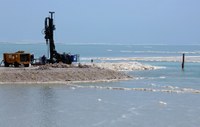
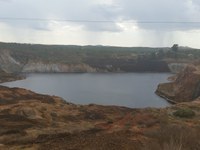
The relevance of these projects
The European Union is committed to investing in these types of projects mainly because the continent is much too dependent on other countries to obtain key raw materials for industries. The goal here will be to explore our own resources.
“When these mines were closed they were not economically viable. However, they still contain large amounts of raw materials, which means that they can be profitable again”, explains José Miguel Almeida, researcher at INESC TEC and professor at ISEP.
Currently, the EU consumes about 25 to 35% of the metal produced worldwide. However, mineral extraction in Europe is equivalent to only 3% of the global mineral production, which means that the EU imports nearly 200 million tonnes of minerals every year.
“These numbers reflect the impact that this project will have in Europe, as it will make it possible to open and rehabilitate mineral deposits which are underexplored in our continent, using a safe and environmental friendly method”, explains Eduardo Silva, coordinator of CRAS at INESC TEC.
Before UNEXMIN, iVAMOS!
A total of 13 organisations from seven European countries are working on project UNEXMIN. The Portuguese institutions involved are INESC TEC and the mining companies Geoplano and EDM.
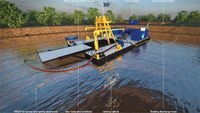
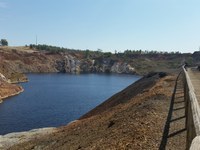
Other than UNEXMIN, INESC TEC and EDM had already been working on another European project called iVAMOS. With a 12.6M budget, the goal with this project is also to explore mines which are under water. The project started in February 2015 and features another Portuguese company, Minerália, as partner.
The goal with ¡VAMOS! is to develop a robotic prototype for underwater exploration, as well as the associated launching and collecting equipment that will be used for conducting tests in four different EU locations: three are submerged mineral deposits, and the fourth is at sea.
As part of iVAMOS!, the mines of S. Domingos (Alentejo, Portugal) and Bejanca (Guarda, Portugal) will be tested for the deployment of an underwater mining prototype until 2017.
The underwater mining equipment is being developed to mine deposits of raw materials, which are usually called open cast mines. To make it possible to extract minerals, 17 European partners are working to develop an innovative system that allows a remotely operated vehicle to be launched from a navigable platform.
“This technology will be particularly useful in mines that have become possible environmental threats. Because the prototypes will be working remotely, it will be possible, for instance, to eliminate the risk of accidents and exposure to dangerous environments, or to avoid discharges of water from the mine and other hydrological problems”, explains Eduardo Silva.

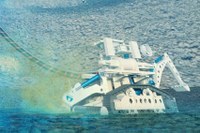
With this technology, it will no longer be necessary to resort to explosions to access the material to be extracted, thus avoiding damages to the walls of the mine, as well as noise and vibrations which may disturb the surrounding population. Moreover, large logistic means will no longer be necessary, and there won’t be any dust because the operations take place under water.
Most of these mines have been abandoned in the last decades, not only for reasons related to economic unsustainability facing the available techniques vs the wealth of the deposits, and variations in the market price, but also because of the environmental unsustainability caused by the continuous conflicts related to the occupation of these sites by factories and houses.

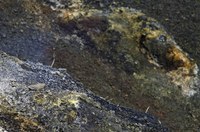
Before iVAMOS!, there was ECOAL
The first INESC TEC project in the mining area dates back to 2013, when the Centre for Applied Photonics (CAP) tested optical fibre technology in the mine of São Pedro da Cova (Portugal). The technology, when combined with appropriate geological models, makes it possible to monitor dangerous coal residues and to prevent spontaneous combustion phenomena.
The ECOAL – MGT (Ecological Management of Coal Waste Piles in Combustion) had a budget of 900 thousand euros and was concluded in June 2015. The project was co-funded by the European Union, with ERDF funds, as part of programme SUDOE.
The INESC TEC researchers mentioned in this news piece are associated with P.Porto/ISEP.


